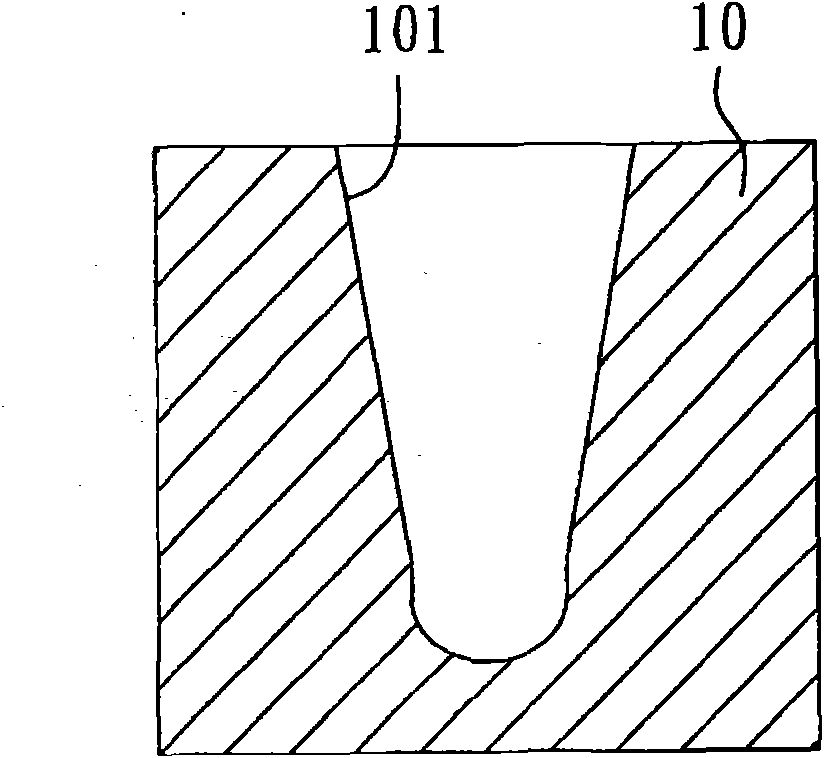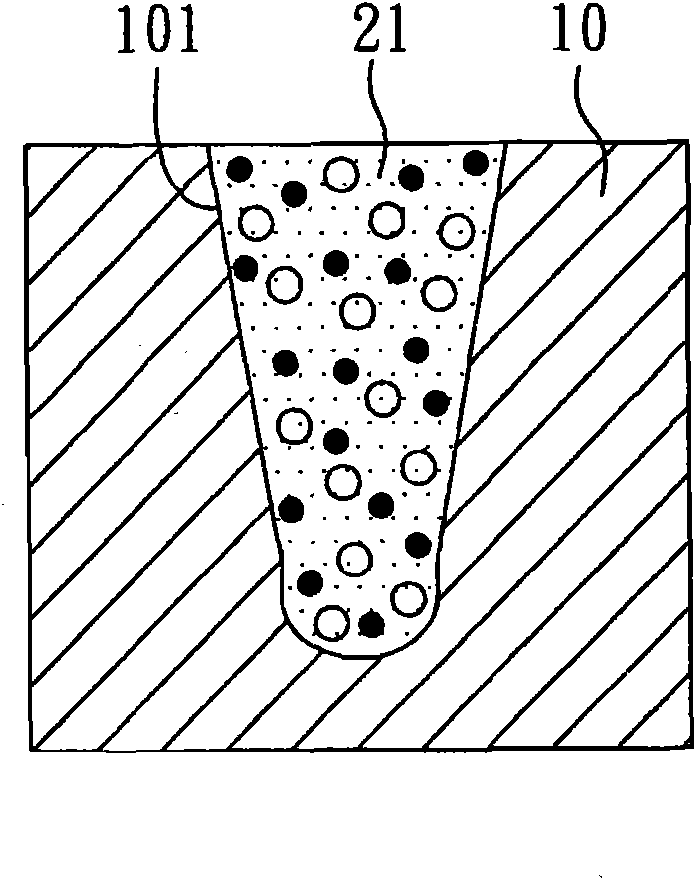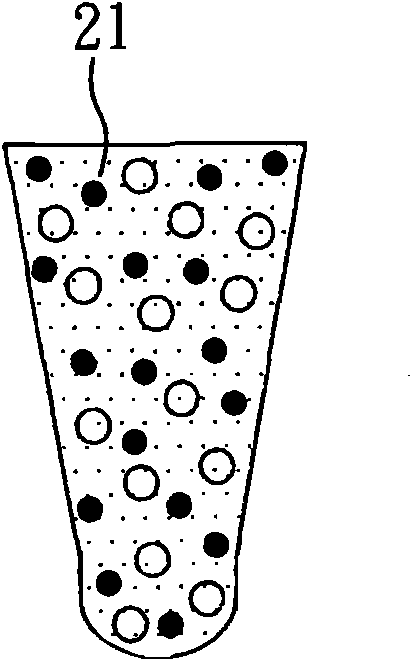Biodegradable filling for restoration of alveolar bone
A bone repair and decomposing technology, applied in medical science, dentistry, dental preparations, etc., can solve problems such as alveolar bone cannot be restored, teeth are skewed, and cannot grow enough
- Summary
- Abstract
- Description
- Claims
- Application Information
AI Technical Summary
Problems solved by technology
Method used
Image
Examples
preparation example Construction
[0046] Preparation of cross-linked collagen fiber
[0047] Take the concentration of 3.0±0.5mg / mL Atelocollagen and add 0.2M phosphate buffer solution, adjust the pH to 7.0±0.2, continue stirring for 4 hours, add the final concentration of 0.003% glutaraldehyde, Or use 1-ethyl-3-(dimethylaminopropyl)carbodiimide (EDC) with a final concentration of 0.004% and N-hydroxysuccinimide (NHS) with a final concentration of 0.0016% as cross-linking And adjust the pH to 5.5±0.2, control the temperature at 35±5℃ and continue to stir for 16 hours to carry out the chemical crosslinking reaction.
[0048] After the chemical cross-linking reaction, the cross-linked collagen fibers are reduced by a homogenizer. After homogenizing at 10000 ± 200 rpm for 10 ± 2 minutes, the cross-linked collagen fibers are collected by centrifugation at 14000 G for 1 hour. The concentration of the resulting cross-linked collagen fibers is generally in the range of 65.0 to 100.0 mg / ml.
[0049] The cross-linked collag...
Embodiment 1
[0056] Biphasic phosphate is used as supporting particles, in which tricalcium phosphate (β-TCP) with a particle size of 0.5 to 2.0 mm and hydroxylapatite (HAP) with a particle size of 0.075 to 0.150 mm are used to 60%:40% by weight ratio is mixed.
[0057] Take the 30±0.2mg / mL cross-linked collagen fiber slurry prepared above, and mix the above-mentioned HAP / β-TCP complex into the cross-linked collagen fiber slurry, wherein the cross-linked collagen fiber slurry: HAP The / β-TCP complex is mixed in a weight ratio of 30%:70%.
[0058] For the molding method of the biodegradable filling material for alveolar bone repair in this embodiment, please refer to Figure 1A to 1C . First, like Figure 1A As shown, a forming mold 10 is prepared, which has a forming groove 101. The inner diameter of the forming groove 101 is gradually reduced from the opening to the inside like a horn, and its bottom is arc-shaped, so that the subsequently manufactured fillings are formed as a whole Dome cone...
Embodiment 4
[0068] HAP / β-TCP composite and bioactive glass are used as supporting particles, among which tricalcium phosphate (β-TCP) / hydroxyapatite (HAP) with particle size ranging from 0.5 to 1.0 mm and particle size are used. In 150 to 600μm bioactive glass.
[0069] Take the 30±0.2mg / mL cross-linked collagen fiber slurry prepared above, and mix the HAP / β-TCP complex and bioactive glass into the cross-linked collagen fiber slurry, wherein the cross-linked collagen fiber Slurry: HAP / β-TCP complex: Bioactive glass is mixed in a weight ratio of 30%: 35%: 35%.
[0070] For the molding method of the biodegradable filling material for alveolar bone repair in this embodiment, please refer to Figure 6A to 6G . First, like Figure 6A As shown, a forming mold 12 is prepared, which has a forming groove 112. The inner diameter of the forming groove 112 is approximately the same from the opening to the inside, but the inner diameter is gradually reduced until the bottom, so that the subsequently manuf...
PUM
| Property | Measurement | Unit |
|---|---|---|
| size | aaaaa | aaaaa |
| size | aaaaa | aaaaa |
| thickness | aaaaa | aaaaa |
Abstract
Description
Claims
Application Information
 Login to View More
Login to View More - R&D
- Intellectual Property
- Life Sciences
- Materials
- Tech Scout
- Unparalleled Data Quality
- Higher Quality Content
- 60% Fewer Hallucinations
Browse by: Latest US Patents, China's latest patents, Technical Efficacy Thesaurus, Application Domain, Technology Topic, Popular Technical Reports.
© 2025 PatSnap. All rights reserved.Legal|Privacy policy|Modern Slavery Act Transparency Statement|Sitemap|About US| Contact US: help@patsnap.com



